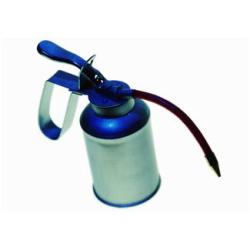Source Institutions
Source Institutions
Add to list Go to activity
Activity link broken? See if it's at the internet archive

This lab activity is about toxic substances like pesticides and their effects on biological systems. The activity starts with an introduction of how birds sequester calcium to make an egg. Learners are asked to bring eggshells from home from different kinds of birds, if possible. These shells are prepared for analysis. Learners discover how to prepare a primary acid, neutralize a base, and calculate the percentage of CaCO3 in shell material. These results lead to a discussion of how calcium moves through this biochemical system and how a pesticide can prevent calcium from building eggshell. This resource includes tips, some related to safety; adult supervision recommended.
- 4 to 24 hours
- 1 to 7 days
- $10 - $20 per group of students
- Ages 14 - 18
- Activity, Experiment/Lab Activity, Lesson/Lesson Plan
- English
Quick Guide
Materials List (per group of students)
- 2-3 eggshells
- Hot plate with pot of water
- Mortar and pestle
- Drying oven
- Four narrow-mouth containers or flasks
- Labels
- Analytical balance
- Reagent-grade KHP
- Potassium acid phthalate
- Distilled water
- Phenolphthalein
- 1000 ml volumetric flask
- NaOH solution
- Burette
- Hydrochloric acid
- Pipette
- 125 ml flasks
- Ethanol
- Data and calculation table
- Fume hood
Subjects
-
Life Sciences
- Cells
-
Diversity of Life
- Animals
-
Ecology
- Human Impact
-
Physical Sciences
-
Chemistry
- Chemical Reactions
- Acids and Bases
-
Chemistry
-
Mathematics
-
Data Analysis and Probability
- Data Analysis
- Data Collection
-
Data Analysis and Probability
-
The Nature of Science
-
Science and Society
- Risks and Benefits
-
The Scientific Process
- Conducting Investigations
- Gathering Data
- Formulating Explanations
- Communicating Results
-
Science and Society
-
The Nature of Technology
-
Technology and Society
- Technology and the Environment
-
Technology and Society
Informal Categories
- Animals
- Nature and Environment
Audience
To use this activity, learners need to:
- see
- see color
- read
- touch
Learning styles supported:
- Involves hands-on or lab activities
Other
This resource is part of:
Access Rights:
- Free access
By:
- Tucker, David
Rights:
- All rights reserved, Access Excellence @ the National Health Museum, 2009
